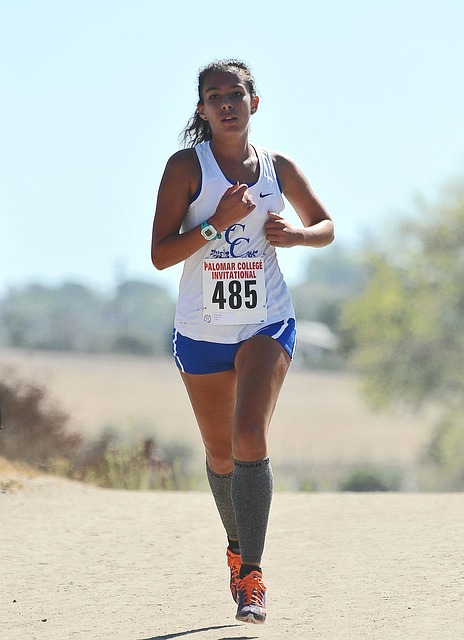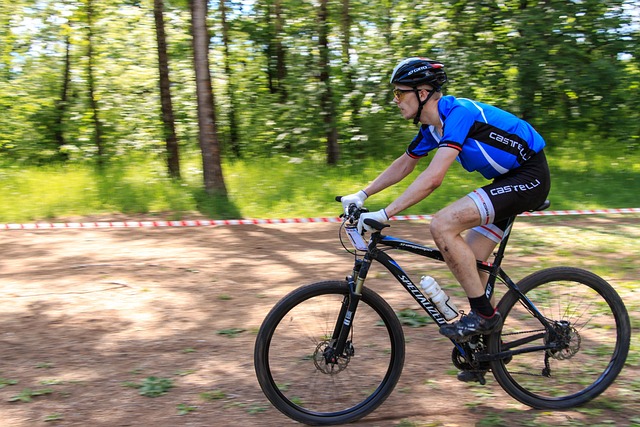College cross country athletes thrive with SMART goals guiding pre-season training. Balancing speed and endurance through HIIT and long-distance runs peaks performance. Customized nutrition, mental preparation techniques, injury prevention strategies, and team camaraderie enhance overall success on the track.
“Unleash your inner runner and prepare for an unforgettable college cross country season! This comprehensive guide reveals essential strategies for optimal pre-season training. From setting ambitious yet achievable goals to crafting a balanced training regimen, we explore proven methods to enhance speed and endurance. Discover the power of nutrition in fueling your body and mind, learn mental techniques for focus and resilience, and implement injury prevention tactics. Additionally, we delve into fostering team camaraderie, ensuring a supportive environment for peak performance.”
- Setting Seasonal Goals: Laying the Foundation for Success
- Training Plan Design: Balancing Speed and Endurance
- Nutrition Strategies: Fueling Your Runner's Body
- Mental Preparation: Building Resilience and Focus
- Injury Prevention: Techniques for Healthy Cross Country Season
- Team Dynamics: Fostering Camaraderie and Motivation
Setting Seasonal Goals: Laying the Foundation for Success

Setting seasonal goals is a crucial step in preparing for college cross country. Athletes should start by reflecting on their past performances and identifying areas for improvement. This involves setting specific, measurable, achievable, relevant, and time-bound (SMART) goals that cover various aspects of training, such as distance endurance, speed work, and strength development. For instance, a runner might aim to increase their 5K time by 2 minutes or complete longer runs with a consistent pace.
These goals provide a framework for athletes to structure their pre-season preparation. By breaking down the overall goal into smaller, manageable tasks, runners can stay motivated and focused throughout their training. Regularly reviewing and adjusting these goals based on progress and performance will lay the foundation for success in the upcoming college cross country season.
Training Plan Design: Balancing Speed and Endurance

In designing a training plan for college cross country, balancing speed and endurance is paramount. The goal is to prepare runners for the rigors of the season while avoiding injury. A well-rounded program incorporates both high-intensity interval training (HIIT) to build speed and long-distance runs to enhance endurance. Coaches should gradually increase the duration and intensity of workouts throughout the pre-season, peaking at competitive levels close to the start of the season.
For instance, a typical week might include a mix of 800m intervals at race pace, followed by recovery jogs; longer runs at a comfortable pace to build stamina; and mid-week tempo runs that push runners slightly beyond their comfort zone. This blend ensures athletes are both fast and durable, crucial attributes in the dynamic environment of college cross country competitions.
Nutrition Strategies: Fueling Your Runner's Body

Proper nutrition is a cornerstone of pre-season preparation for college cross country runners. Their bodies demand consistent fuel to build endurance and recover from rigorous training sessions. A balanced diet should focus on complex carbohydrates, lean proteins, and healthy fats. Carbohydrates provide the primary energy source during workouts and races, while proteins aid in muscle repair and growth. Healthy fats support overall health and hormone regulation.
Hydration is equally vital. Runners should maintain adequate water intake throughout the day and increase it before, during, and after training to replace lost electrolytes. Nutritional supplements can complement a runner’s diet but should not replace whole foods. Customizing meal plans according to individual needs and preferences ensures optimal energy levels and performance for each college cross country athlete.
Mental Preparation: Building Resilience and Focus

Mental preparation plays a pivotal role in successful college cross country performances. Athletes must build resilience, focusing on overcoming mental barriers and developing a strong mindset to endure physically demanding races. This involves visualizing success, implementing breathing techniques for stress relief, and cultivating positive self-talk during training sessions. By fostering mental toughness, runners can enhance their focus, remain motivated, and consistently perform at their best under pressure.
In the lead up to the season, coaches and athletes should prioritize strategies that foster mental resilience. This includes setting realistic goals, breaking down training plans into manageable chunks, and celebrating small victories along the way. Such practices help build confidence and ensure runners approach competition with a clear head, translating to improved performance and overall well-being in college cross country events.
Injury Prevention: Techniques for Healthy Cross Country Season

Injury prevention is a critical aspect of pre-season preparation for college cross country athletes. The off-season is a time to build a solid foundation through strength training and flexibility exercises, focusing on key muscle groups used in running, such as the core, hips, and legs. Incorporating dynamic stretching routines before workouts and static stretching post-runs can significantly reduce the risk of overuse injuries like shin splints and hamstring strains.
Additionally, incorporating cross-training activities like swimming, cycling, or yoga into the routine provides rest days for running muscles while still promoting cardiovascular fitness. Proper nutrition and adequate hydration are also essential to fuel training sessions and aid in recovery, ensuring athletes remain healthy throughout the competitive college cross country season.
Team Dynamics: Fostering Camaraderie and Motivation

In college cross country, team dynamics play a crucial role in pre-season preparation. Building camaraderie among team members fosters a supportive environment that enhances motivation and performance. Training together, sharing goals, and celebrating victories create strong bonds, encouraging athletes to push themselves harder during practices and competitions. This sense of belonging and mutual encouragement is vital for navigating the demanding seasons ahead.
Moreover, effective communication and teamwork within the team dynamic enable coaches to implement strategies tailored to individual strengths and weaknesses. Athletes learn from one another, picking up valuable techniques and motivational tactics that boost their overall confidence. The collective energy and enthusiasm generated through these dynamics revolutionize training routines, ensuring each member is inspired and ready to conquer challenges on the race track.






